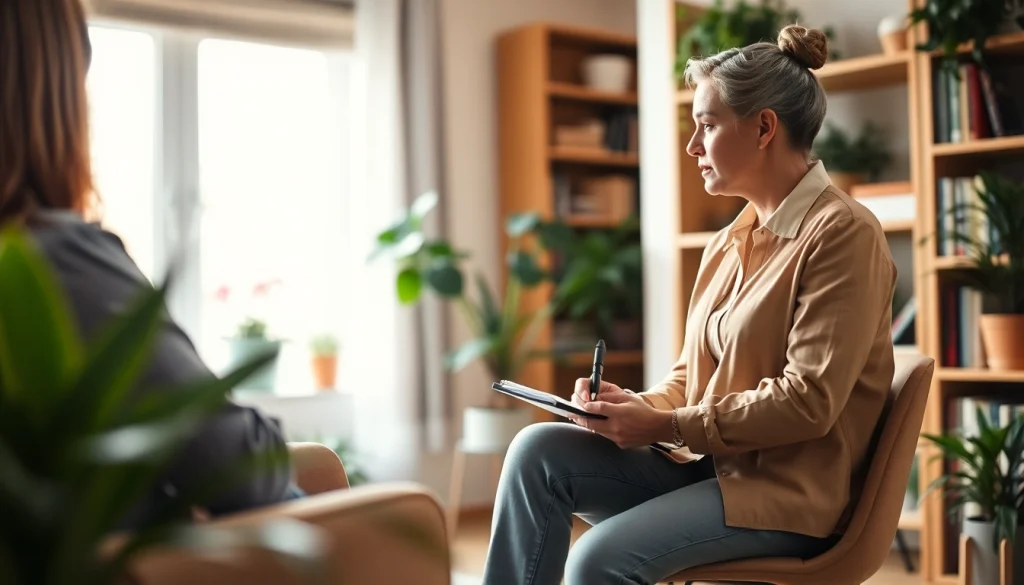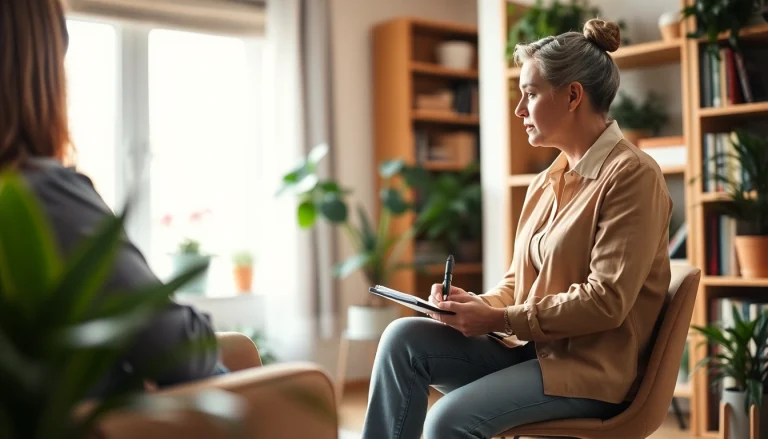
Understanding Anxiety
Anxiety is a natural human emotion that we all experience at different points in our lives, often triggered by stress or uncertainty. However, when anxiety becomes more than just a temporary feeling and starts to impact daily living, it can be classified as an anxiety disorder. In this article, we will delve deeply into what anxiety is, identify common triggers, and understand its impact on daily life while providing effective strategies for dealing with anxiety.
What is Anxiety?
Anxiety is characterized by feelings of tension, worried thoughts, and physical changes such as increased blood pressure. It serves as a survival mechanism, alerting us to potential threats in our environment. While it can be beneficial in short bursts, long-term anxiety can lead to various mental health conditions, significantly affecting one’s quality of life.
Common Triggers of Anxiety
Understanding what triggers anxiety is crucial for managing it effectively. Common triggers can include:
- Work-related Stress: High-pressure environments, looming deadlines, or conflicts with colleagues can heighten anxiety.
- Personal Relationships: Issues like breakups, family disagreements, or overarching expectations can provoke feelings of anxiety.
- Health Concerns: Worries about health, particularly in the wake of a diagnosis or chronic illness, can be a significant trigger.
- Financial Issues: Growing debts, economic instability, or job security fears lead to increased anxiousness.
- Major Life Changes: Events like moving to a new city, starting a new job, or having a baby can trigger anxiety due to their unknowns.
The Impact of Anxiety on Daily Life
The ramifications of anxiety extend beyond mere emotional states; they affect mental, physical, and social well-being. Chronic anxiety can:
- Impair Daily Functionality: It can make it challenging to concentrate, complete tasks, or even engage socially.
- Negatively Affect Physical Health: Chronic anxiety can lead to insomnia, headaches, and gastrointestinal disturbances.
- Lead to Avoidance Behaviors: People may start avoiding situations or places that trigger their anxiety, leading to isolation.
Recognizing Symptoms of Anxiety
Recognizing the symptoms of anxiety is the first step in addressing this mental health condition. Symptoms can be physical, emotional, and behavioral.
Physical Symptoms of Anxiety
Physical manifestations of anxiety can include:
- Rapid heartbeat
- Sweating
- Trembling or shaking
- Fatigue
- Muscle tension
- Headaches
- Digestive issues
Emotional and Behavioral Symptoms
Emotionally, individuals with anxiety may experience feelings of dread, irritability, or a constant state of worry. Behavioral symptoms can include:
- Avoidance of anxiety-inducing situations
- Withdrawal from friends and family
- Difficulty in making decisions
- Procrastination due to fear of failure
When to Seek Professional Help
If anxiety is significantly affecting your everyday life, relationships, or work performance, seeking help from a mental health professional is essential. Signs that it’s time to reach out include:
- Persistent feelings of apprehension or dread
- Lack of control over anxiety, even in everyday situations
- Physical symptoms that affect your health and daily routine
- Inability to carry out normal activities or maintain relationships
Coping Mechanisms for Dealing with Anxiety
Once you recognize the symptoms of anxiety, implementing coping mechanisms can dramatically improve your well-being. Here are several effective strategies:
Relaxation Techniques and Mindfulness
Practicing relaxation techniques can significantly reduce anxiety levels. Techniques include:
- Deep Breathing Exercises: Focusing on your breath can help calm the nervous system.
- Progressive Muscle Relaxation: Tensing and relaxing muscle groups can alleviate physical tension.
- Mindfulness Meditation: This technique involves focusing on the present moment, increasing self-awareness and reducing ruminating thoughts.
- Visualization: Picturing serene images can promote feelings of relaxation and calmness.
Physical Activity and Its Benefits
Regular physical activity can serve as a powerful antidote to anxiety. Exercise releases endorphins, which are natural mood lifters. Activities to incorporate include:
- Aerobic Exercises: Activities such as running, cycling, or swimming can help reduce anxiety and improve mood.
- Yoga and Tai Chi: These focus on gentle movements and breathing, which promote relaxation.
- Setting a Routine: Consistently scheduling physical activity can provide a sense of control over life.
Developing a Support System
A strong support system can ease feelings of isolation and anxiety. Building connections can involve:
- Talking to Friends or Family: Sharing feelings can lighten the burden of anxiety.
- Joining Support Groups: Connecting with others facing similar challenges can foster understanding and sharing of coping strategies.
- Professional Support: Engaging mental health professionals can provide tailored coping strategies and a safe space to discuss challenges.
Therapies and Treatments for Anxiety
Therapeutic avenues can significantly reduce anxiety symptoms. Here are some common effective therapies:
Cognitive Behavioral Therapy Explained
Cognitive Behavioral Therapy (CBT) is widely regarded as an effective treatment for various anxiety disorders. CBT focuses on identifying and changing negative thought patterns, which can help individuals devise healthier responses to anxiety-inducing situations.
Medication Options for Anxiety
Medication can be an effective way to alleviate symptoms of anxiety, particularly in severe cases. Common types of medications include:
- Antidepressants: Certain antidepressants can help manage symptoms by regulating neurotransmitter levels in the brain.
- Anti-Anxiety Medications: These medications may offer temporary relief from anxiety but should be used under medical supervision.
- Beta-Blockers: Often used for heart conditions, beta-blockers can also help with physical symptoms of anxiety, such as a rapid heartbeat.
Combining Therapies for Effective Management
Many find that a combination of therapy and medication provides the best results. This holistic approach allows individuals to manage their symptoms effectively while addressing underlying issues. Consultation with a healthcare provider can help tailor a plan that meets your specific needs.
Long-term Strategies for Managing Anxiety
Beyond immediate coping mechanisms, developing long-term strategies is essential for managing anxiety sustainably. Here are some key approaches:
Building Resilience Against Anxiety
Resilience can be built through consistent practice and self-awareness. Strategies to build resilience include:
- Practicing Self-Compassion: Being kind to yourself during tough times can reduce feelings of inadequacy.
- Learning Problem-Solving Skills: Developing effective problem-solving techniques allows for better handling of anxiety-inducing situations.
- Maintaining a Positive Outlook: Focusing on accomplishments rather than setbacks can create a more balanced view of life.
Creating a Healthy Lifestyle
A healthy lifestyle can play a crucial role in anxiety management. Principles for a healthy lifestyle include:
- Balanced Nutrition: Eating a well-balanced diet rich in whole foods can positively impact mental health.
- Regular Sleep Patterns: Prioritizing adequate rest and maintaining a consistent sleep schedule can improve overall mood and stress levels.
- Avoiding Alcohol and Caffeine: These substances can exacerbate anxiety symptoms and disrupt sleep patterns.
Setting Realistic Goals for Progress
Setting achievable goals can provide direction and purpose, which is particularly helpful for managing anxiety. To set realistic goals:
- Use the SMART Criteria: Ensure goals are Specific, Measurable, Achievable, Relevant, and Time-Bound.
- Start Small: Breaking tasks into smaller, manageable steps can reduce overwhelming feelings.
- Celebrate Progress: Recognizing achievements, no matter how small, fosters a sense of accomplishment and motivation.





